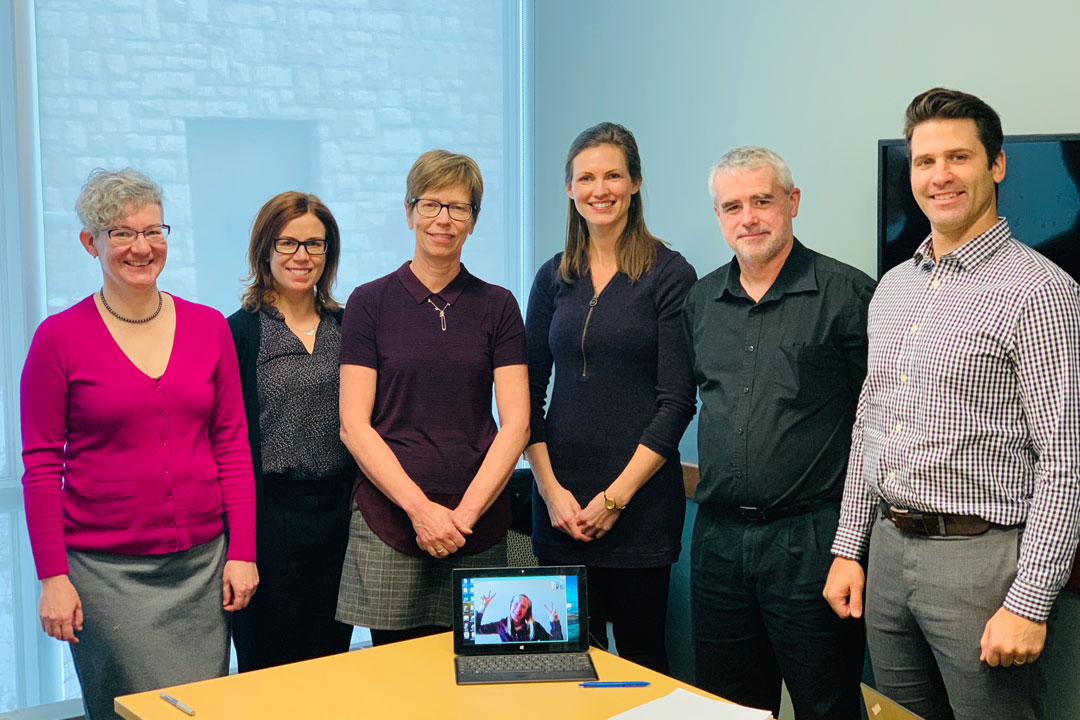
Strike a pose
Can yoga decrease the risk of fall-related injuries in peri- and post-menopausal women? A team of researchers at the University of Saskatchewan want to find out.
By Alyssa WiebeYoga continues to be one of the fastest growing health practices in the areas of physical, mental, emotional, social and spiritual well-being in North America. The question of whether the benefits of a regular yoga practice extend to the prevention of injury is being investigated by Dr. Cathy Arnold from the School of Rehabilitation and her research team. They have received a College of Medicine Research Award (CoMRAD) grant to evaluate the effect of yoga on fall risk factors. They will also examine whether yoga has the potential to change the ability to successfully control landing and descent using a simulated fall among peri-and post- menopausal women.
“Older women are particularly vulnerable to sustaining fall-related injuries and although targeted exercises focussing on balance and strength may decrease the risk of falls, the ideal type of intervention to prevent injury when a fall is unavoidable is not known,” said Arnold.
Starting this week, Dr. Arnold and her team will be collaborating with Ground Yoga in Saskatoon, SK to perform a community-based yoga intervention. The studio classes will be Hatha flow-type yoga, where the team will measure strength, balance, functional mobility, and incontinence leakage. Classes are followed by extensive testing at the U of S within the College of Kinesiology’s Biomechanics of Balance and Movement Lab to simulate falls.
“Yoga is an increasingly popular health practice with potential benefits linked to improving balance, muscle strength and quality of life, but there is no evidence that yoga can improve the capacity to reduce the risk of fall-related injury,” said Arnold. “We hope that we will see an improvement and decrease in fall risk as well as improvement in upper body strength.”
When it comes to similar research, Dr. Arnold and her team are aware that exercise is known to decrease fall risk in adults over the age of 60 when components of balance, strength and agility are included.
“This builds on the great work that Dr. Arnold has done in the area of reducing fall risk and fall related injury through targeted exercise programs,” said Dr. Joel Lanovaz, a member of Dr. Arnold’s research team. “She has brought together an excellent team to investigate on this promising approach.”
Her initial findings indicate that older women also demonstrate weakened stimulation of the abdominal core muscles prior to an unexpected simulated fall. The impact of the weakened pelvic floor muscle control could be a contributing factor to fall and injury risk as it has been associated with decreased balance, urinary incontinence and fall risk.
Arnold’s research team will include Dr. Stephanie Madill (School of Rehabilitation Science), Dr. Brenna Bath (School of Rehabilitation Science), Dr. Katie Crockett (Bourassa and Associates Rehabilitation Centre), Dr. Cathy Arnold (School of Rehabilitation Science) Dr. Joel Lanovaz (College of Kinesiology), Dr. Jon Farthing (College of Kinesiology), and Shelly Prosko (Physioyoga).
Arnold and her research team are uniquely positioned to conduct this pilot research. They have developed an innovative and reliable protocol to measure the ability to react, land and control the descent of a forward fall. The unique factor of this current study is the focus on the effect of a different type of activity that is readily available in the community on decreasing fall-related injury risk particularly for older women at risk in their peri-menopausal and early post-menopausal years.
For more information or to become involved in the research, please contact Arnold via email at cathy.arnold@usask.ca

